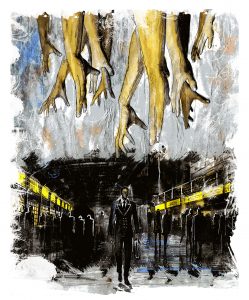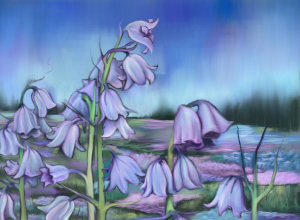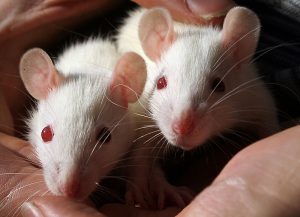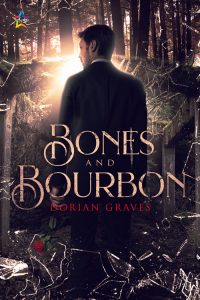 Dorian Graves has contributed stories to Mad Scientist Journal and Utter Fabrication. Today, we sat down with Dorian to talk about Bones and Bourbon.
Dorian Graves has contributed stories to Mad Scientist Journal and Utter Fabrication. Today, we sat down with Dorian to talk about Bones and Bourbon.
DV: Tell our readers a little bit about yourself.
Dorian Graves: Greetings and salutations! I’m Dorian Graves, an author and artist hailing from the mountains of Oregon. I tend to write weird fantasy mixed with humor and horror, though I’ve been known to dabble in science fiction and non-fantastical tall tales. I love games of all sorts, traveling across the Pacific Northwest, and developing more story ideas than I’ll ever have time to write.
DV: You pitched this book as “If SUPERNATURAL were more pagan, more queer, and often sided with monsters instead of humans, you’d have Bones and Bourbon.” What inspired you to write a book in this vein?
DG: When I first discovered the urban fantasy genre, I fell in love with stories of humans and monsters clashing in our modern world and its hidden magic places. Stories where families banded together to combat these threats were even better, seeing as I’m a sucker for strong familial relationships in fiction. As I read and watched more stories in the genre (including Supernatural), I noticed a few reoccurring concepts. Even when pantheons of other deities existed, many of these stories still had angels, demons, and other trappings of Judeo-Christian iconography. Monsters could be sympathetic on an individual level, but most of the time, they were trials to overcome both outside and within (especially for those half-human characters torn between two worlds). And if a romance was going to occur, it was between a dude and a chick, and either built too fast or led to one half of the couple becoming a liability to the other.
For a Dorian just coming to terms with being a bisexual polytheist full of questions about identity and gender, these trends were troubling. Where did I, and others like me, fit in a world where the heroes could fight off evil but not societal expectations? What about those who couldn’t conform, those “monsters” who couldn’t change who they were, who still had lives and feelings under the fur and fangs?
Bringing these elements into Bones and Bourbon came in stages as I became more comfortable with both the story and myself. The Gallows Brothers used to be human like other heroes before them, when I decided making them half-huldra gave them a better chance to understand both the human and supernatural points of view. Jarrod was always bisexual, but it took a few drafts and a particular dream to realize he was transgender and to give him his loyal-but-chaotic boyfriend, Farris. And while the pagan elements are more subtle in this book, this is still a setting where gods are mentioned off-hand without demons and angels joining them, where Samhain is a night of great power, and exorcisms can be performed with witchcraft-inspired alchemy instead of prayers. Even when these elements aren’t at the forefront of the story, they’re still present in the background, implying a different kind of normal for these characters—and in a way, for some of the readers too.
DV: You’ve got some fascinating supernatural creatures in Bones and Bourbon that aren’t often seen in urban fantasy. What made you decide to include some of these creatures?
DG: Overall, my goal with deciding what creatures to write is to ignore the “popular” creatures and cast the spotlight on monsters that people may not have heard of before. I find that by utilizing rarer creatures, there’s more flexibility when it comes to defining how they work and their roles in a story.
To explain my point a little better, consider the vampire. I’ll be the first to admit I love vampires; Dracula is one of my favorite books, and adding an immortal bloodsucker with a slew of bizarre powers can liven up any story. But when we read about vampires, we arrive with preconceived notions of how they work (immortal, drinks blood, avoids sunlight) and what sort of themes will be explored (blood drinking compared to addiction, how to balance short-term passions with immortality and its connected baggage). These ideas can be played with or subverted, but push those boundaries enough, and you aren’t working with a vampire anymore.
Contrast this with a rarer creature—say, the huldra I use in Bones and Bourbon. There are plenty of tales and traditions to draw from, same as there were for vampires. I handpicked traits that suited my story (hollow bodies, superhuman strength, cow tails) and built on those for some of their connected themes (responsibilities of strength, trying to blend into human society with inhuman powers). Readers already don’t know what to expect since they aren’t used to huldra, and as they become better known, other interpretations can open up. Perhaps another author wants to focus on the beautiful glamors of huldra lore and explore what it’s like to “pass” as human without being one, and another sticks to their aspects as nature guardians while giving them fox tails instead of cow tails. All become fresh and exciting, and now there are a slew of new stories that can be told using the traits of a huldra!
As for why these specific creatures are used in this book … well, I’m the sort who reads Dungeons and Dragons bestiaries for fun and keeps an encyclopedia of mythical creatures on the bookshelf, so I already had these beings in the back of my mind. The initial outline came about when I imagined Retz and Jarrod fighting a five-headed lamia in a lavish castle, fighting from gilded cages suspended from the ceiling that had creatures inside—including shining fire spirits, which became the furaribi. The huldra aspect actually came from my attempts to develop the protagonists’ mother and imagining her punching out a car with her immense strength, and realizing that making the Gallows brothers half-huldra worked well for the narrative and their character arcs. The remaining creatures were added to fit certain roles in the story—yes, even the carnivorous unicorns.
DV: What was the most interesting thing you learned about these unusual supernatural creatures in doing your research?
DG: Some of these creatures are so little-known that information is still being uncovered and released about them. Of particular note are the furaribi, Japanese fire-spirits whose escape from a supernatural menagerie sparks the plot of the novel. When I first researched them, there wasn’t a lot of information, so I had to make most of the details up. Then I became a mountain hermit for a few years, and while that’s great for writing, research becomes a mite difficult when all you have is dial-up internet and a set of encyclopedias from the year you were born.
Cue me preparing the manuscript for publication, deciding I had to fact-check one little detail…and discovering that more data AND folk tales about the furaribi have been translated and made public. Followed by me cheering, then racing to fix the manuscript, adding new details and fixing old ones to fit this new information. Not all of these elements were incorporated into this book … but then again, Bones and Bourbon is meant to be the first in a series, so I hope to dive deeper into this lore in later books.
DV: What project or projects are you working on next?
DG: I’m just putting the finishing touches on a to-be-named space fantasy novella, which I wrote for NineStar Press’s “Lost” collection. It follows a group of alien, polyamorous space pirates who crash on a jungle planet with no supplies, and have to survive by relying on wits, love, and mind-controlling music. Plus, this story does have a couple mad scientists in it!
I also have the next couple books of the “Deadly Drinks” series in progress, so here’s hoping all goes well with Bones and Bourbon so the Gallows brothers can go on further adventures.
~
Thanks, Dorian! If you’re interested in learning more about Bones and Bourbon, you can find it on the NineStar Press website!
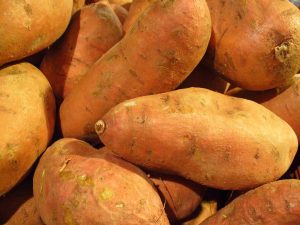

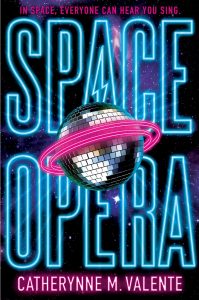 Space Opera
Space Opera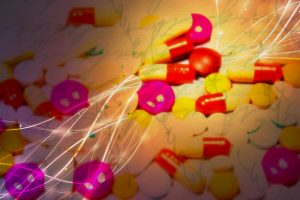
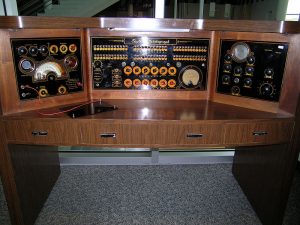
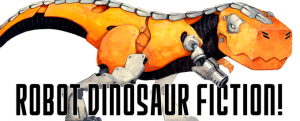 The world needs more weird fiction, and
The world needs more weird fiction, and 